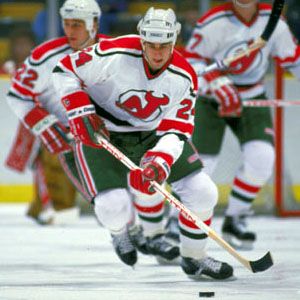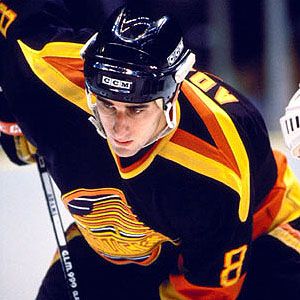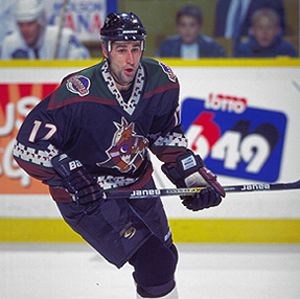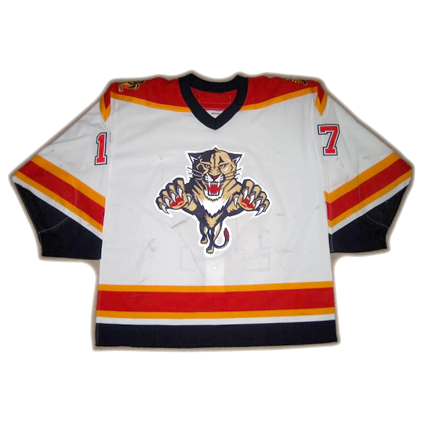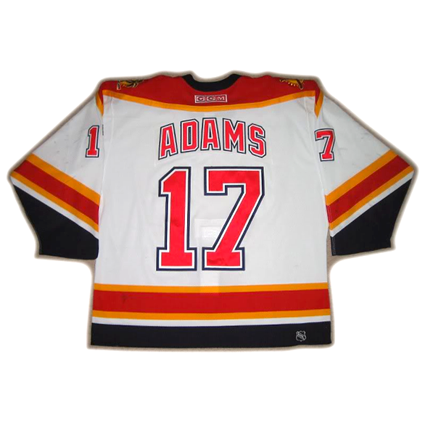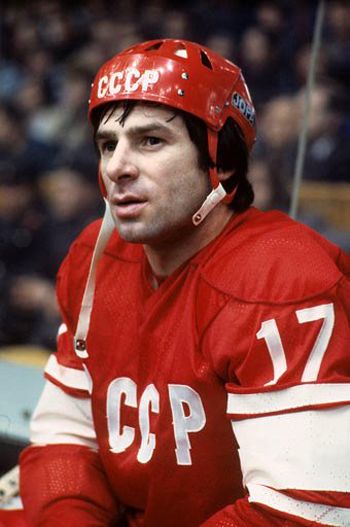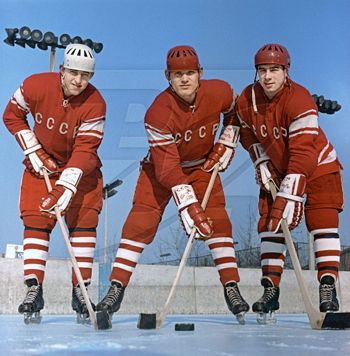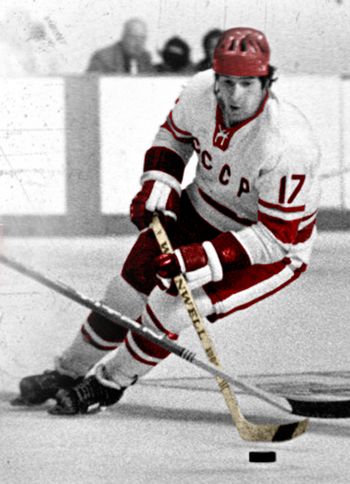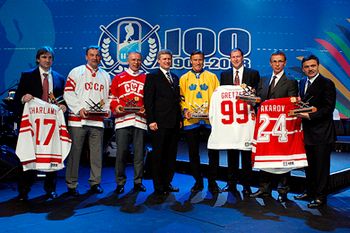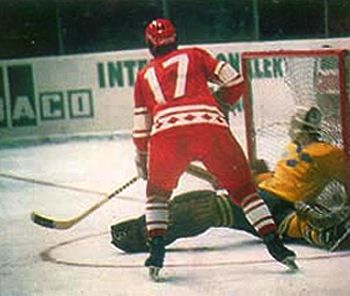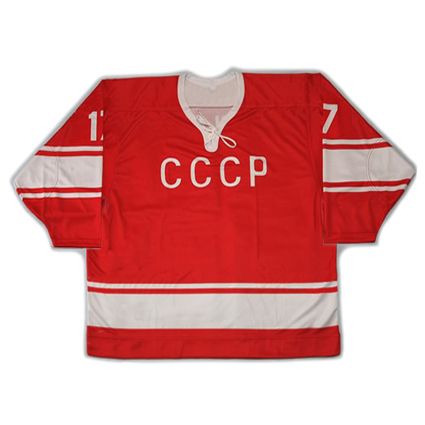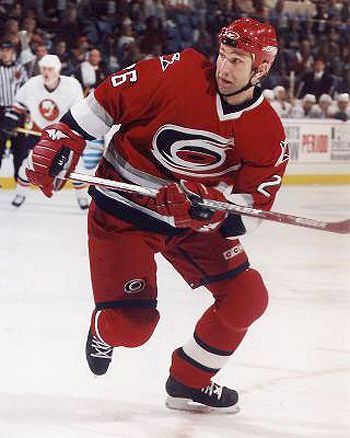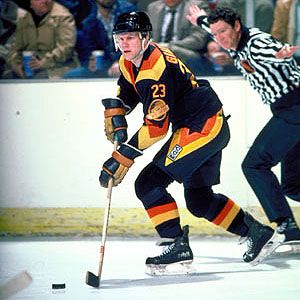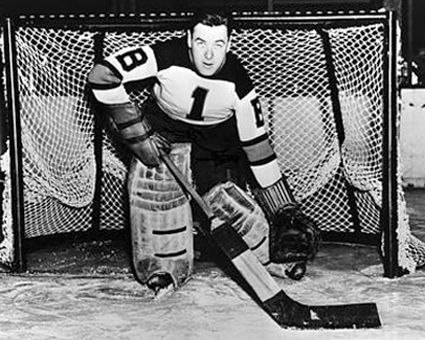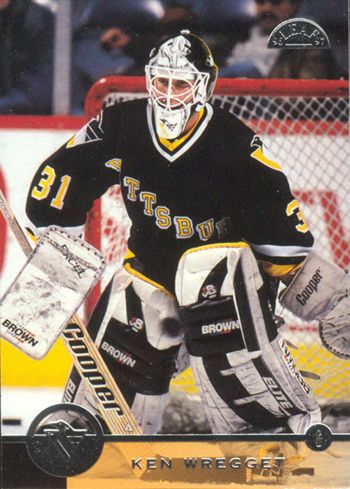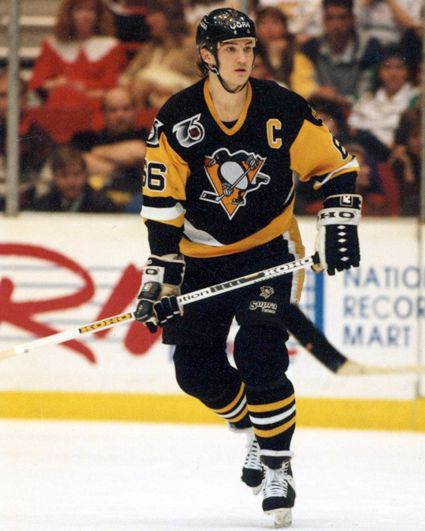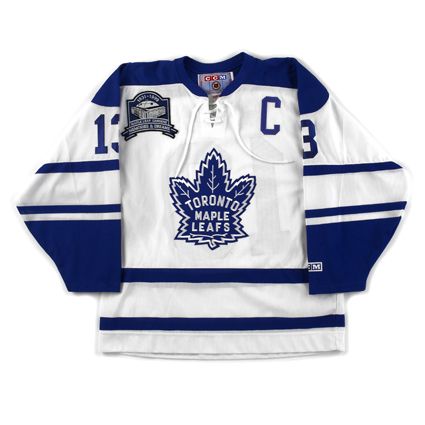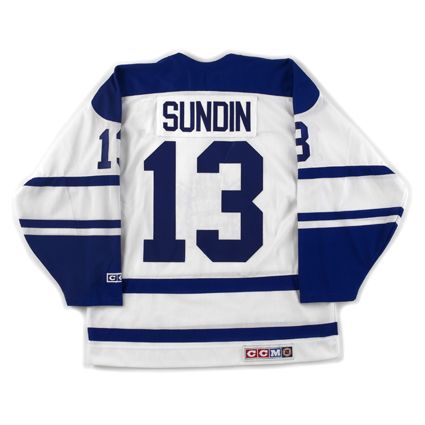Friday, November 15, 2013
2000-01 Florida Panthers Greg Adams Jersey
Greg Adams began his road to the NHL with the Kelowna Buckaroos of the British Columbia Junior Hockey League during the 1980-81 season. The left winger got off to a great start, scoring 40 goals and 90 points in 48 games at the age of 17. After a second season with Kelowna, Adams definitely took the road less traveled when he joined the little known, little regarded, little remembered hockey program at Northern Arizona University.
Northern Arizona fielded a Division 1 team from 1980-81 to 1985-86, the first five as an independent club. During his first season with the Lumberjacks, Adams scored at more than a point per game with 35 points in 29 games, but erupted in 1983-84 with 44 goals and 73 points to lead not only Northern Arizona, but the entire nation in scoring.
Still, after that performance, Adams went undrafted by the NHL and signed as a free agent with the New Jersey Devils. He spilt his first professional season between the Maine Mariners of the AHL (41 games and 11 playoff games) and the Devils (36 games). During only his second NHL season, and his first full season, Adams set a career best with 77 points in 78 games. His point total sank in year three to 47 in 1986-87.
That drop in points made Adams expendable and he was dealt to the Vancouver Canucks along with goaltender Kirk McLean. The change in scenery worked well for Adams who went on to play eight seasons in Vancouver, including four goals in his first game as a Canuck. His first season with the Canucks saw him set a career high with 36 goals while coming within one of his career best with 76 points, just one off the team lead.
While with Vancouver he would post three more 50 point seasons as well as scoring one of the greatest goals in team history with his overtime goal in Game 5 of the 1994 Western Conference Finals to propel the Canucks to the Stanley Cup Finals after they had trailed by three goals at one point. During that season's playoffs, Adams would score 14 points in 23 games, including the game winning goal in overtime of Game 1 of the finals.
After 31 games of the 1994-95 season, he would be traded to the Dallas Stars. Three seasons with Dallas saw Adams have two 20 goal seasons, the 8th and 9th of his career. Still, he never played more than 66 games for Dallas due to a series of injuries which limited his playing time.
For the 1998-99 season Adams moved to the Phoenix Coyotes as a free agent, where he once again had a good first season with his new team, seeing action in 75 games. He played a second season with Phoenix where his 46 points were the most he had scored since 1993 with Vancouver.
For the 2000-01 season, Adams joined the Florida Panthers as a free agent. He would play in 60 games that year, which included his 1,000th career game on this date in 2000. He would celebrate the occasion by scoring the Panthers first goal of the game in a 4-1 win over the Carolina Hurricanes as he became the only player from Northern Arizona University to ever play 1,000 games in the NHL, as he was actually one of only two players from NAU to even make it to the NHL, the other being Bob Beers.
After sitting out the 2001-02 season, Adams tried his hand at hockey in Europe, signing with the Frankfurt Lions of the German DEL where he would score 42 points in 50 games to close out his career once and for all.
His final NHL totals are 1,056 games played, 355 goals and 388 assists for 743 points.
Today's featured jersey is a 2000-01 Florida Panthers Greg Adams jersey. This is from the second era of the Panthers jerseys, as their original jerseys worn from 1993-1998 had one color red names before changing to three color vertically arched names on the back in time for the 1998-99 season. This style would remain in use through the 2005-06 season before the arching was removed and the three color names became straight once again in 2006-07 for a single season prior to the change to new jerseys with the arrival of the Reebok Edge jerseys the following season.
Today's video segment begins with Adams overtime goal against the Maple Leafs to send Vancouver to the Stanley Cup Finals in 1994.
Here, Adams scores the game winning goal in overtime of Game 1 of the finals just after the Rangers hit the crossbar at the other end.
Labels:
Adams Greg,
Florida Panthers
Thursday, November 14, 2013
1972 Soviet Union National Team Valeri Kharlamov Jersey
Considered to be one of the greatest players the game has ever seen, Valeri Kharlamov of the Soviet Union was born on this date in 1948. He joined the Central Red Army club in the Soviet Elite League in 1967-68 and scored two goals in 15 games as a rookie.
Soviet hockey legend Valeri Kharlamov
Having got his feet wet the season before, Kharlamov made no secret of his prodigious talent the following season when he increased his goal scoring to 37 goals in 42 games of the shorter Soviet League season. Following the season he would make the first of his 11 consecutive World Championship appearances and contributed 13 points in ten games on his way to the first gold medal of his illustrious international career.
In the 1969-70 season Kharlamov averaged a goal per game while playing in 33 contests for Central Red Army in a season which concluded with the first of four consecutive Soviet League championships. He followed that with ten points in nine games on his way to another World Championship gold medal.
Kharlamov won the Soviet League goal scoring title in 1970-71 with a career highs with 40 goals and 52 points in 34 games. He earned his first World Championship All-Star selection when he tallied 17 points in ten games as he was awarded his third consecutive World Championship gold medal, the dominant Soviet Union's 9th in a row.
He one-upped himself by capturing the Soviet League points scoring title in 1971-72, albeit with a lower personal point total that the previous season, with 40 points and was named the Soviet League MVP for the first time. That was not the highlight of Kharlamov's season however, as he introduced himself to the world as he led the Soviet Union to the gold medal at the 1972 Olympic Games in Sapporo, Japan where his 15 points in just five games led all scorers by six points as the world got their first real glimpse of his superior skating and playmaking abilities. Later that spring he was again named to the World Championship All-Star team, but had to settle for the silver medal for the first time.
In case anyone missed his performance in the Olympics, Kharlamov became a true star of international hockey with his performance in the fabled 1972 Summit Series when the best that the Soviet Union had to offer took on an All-Star team of Canadian professionals for the first time ever. While many in Canada assumed that their professional players would easily win all eight games of the series, Kharlamov led the Soviets with two goals in their stunning Game 1 upset of Team Canada on home ice in Montreal. While Canada led by two six minutes in, the Soviets quickly turned the tide, evening the score before the period ended and began to pull away with Kharlamov's two goals in the second on their way to a 7-3 win.
First teamed together in 1968, the line of Boris Mikhailov, Vladimir Petrov and Valeri Kharlamov, dominated international hockey throughout the 1970's
After losing Game 2, Kharlamov contributed another goal in their 4-4 tie in Game 3. After the Soviets 5-3 win in Game 4 in Canada, the series shifted to Moscow in the Soviet Union. When the Soviets came from behind 4-1 to win Game 5, Bobby Clarke of Canada deliberately broke Kharlamov's ankle in Game 6 which enabled the Canadians to stage a comeback and eventually win the series in a dramatic Game 8.
A fourth Soviet League title came in 1972-73 as he scored 32 points in 27 games after recovering from his broken ankle. A return to World Championship gold was powered by an on-from Kharlamov as he racked up 23 points in ten games for the host Soviet Union.
The consecutive championship streak ended in the Soviet League in 1973-74 but the World Championship success continued with another gold in 1974.
Prior to the start of the next season, Kharlamov again participated for the Soviet Union in the 1974 Summit Series, where they took on a team of mainly Canadian professionals from the World Hockey Association, which the Soviets won with a 4-1-3 record. Kharlamov contributed seven points in the eight games.
The Soviet League title returned to Central Red Army in 1974-75 as Kharlamov had a great season with 39 points in 31 games and yet another World Championship gold on the heels of 16 points in 9 games.
Kharlamov on the attack
While his personal scoring level continued unchanged in 1975-76, Kharlamov had to unusually settle for silver in both the Soviet League and the World Championships. All was not lost however, as the Soviet Union dominated the 1976 Olympic Games in Innsbruck, Austria to win the second gold medal of Kharlamov's career. He would be one of four Soviet players to tie for the tournament scoring lead with ten points in five games, including his game winning goal in their final game against Czechoslovakia.
Of interest, it was during the Soviet League season that the Central Red Army club took a break from domestic competition and participated in the first Super Series of exhibition games in North America against teams from the NHL which included a win over the New York Rangers, the enthralling tie against Montreal on New Year's Eve, called by many the greatest game of hockey ever played, another win, this time over the Boston Bruins and the notorious game against the Philadelphia Flyers when Kharlamov was targeted with an elbow to the head from the blind side which caused the Soviet coach to pull his team off the ice when to penalty was called.
That spring he was seriously injured in a car accident, which put his hockey career in jeopardy and cost him a chance to compete in the 1976 Canada Cup.
While Kharlamov was limited to 21 games because of recovery time from his injuries, the 1976-77 saw Central Red Army begin an era of dominance unlike any ever seen before with the first of 13 consecutive titles but the national team would fall to third place and the bronze medal at the World Championships.
Kharlamov would have one of his best offensive seasons when he totaled 42 points in only 29 games during the 1977-78 domestic season and a new run of gold medals would begin at the 1978 World Championships, the first of five in a row for the Soviet Union.
He was in peak form in 1978-79, scoring 22 goals and 48 points in the Soviet League, his greatest number of points since 1971. He had another impressive tournament at the World Championships with 14 points in eight games as the Soviet Union won gold on home ice in Moscow. He also participated in the 1979 Challenge Cup for the Soviet Union in a three game series against a team of NHL All-Stars which took the place of the normal NHL All-Star Game that season, which the Soviets won two games to one with a decisive 6-0 victory on Game 3.
1979-80 was a memorable campaign for Kharlamov as he added 38 points in 42 games and another Soviet League title. In February of 1980, his chance at his third consecutive Olympic gold medal was derailed by the "Miracle on Ice" during which the Soviet Union was upset by the United States in an upset so great that the loss was ranked the #1 story of the century by the International Ice Hockey Federation (IIHF). The Soviet Union eventually was awarded the silver medal with a 7-1 record. Of note, there were no World Championships held in 1980 due to the Olympic games.
A final Soviet League title for Kharlamov came in 1980-81 when he scored 25 points in 30 games. During his Soviet League career, Kharlamov scored 293 goals and 214 assists for 504 points in 436 games.
Sadly, on August 17, 1981, Kharlamov was killed at the age of 33 due to injuries suffered in a car accident which also claimed the life of his wife Irina.
In 1998, Kharlamov was inducted into the IIHF Hall of Fame. 2005 saw him become only the second non-NHL player to be inducted into the Hockey Hall of Fame, joining fellow Soviet player and teammate, goaltender Vladislav Tretiak. In 2008 he was selected as just one of six players to be named to the IIHF Centennial All-Star Team, honoring the best players in the 100 year history of the IIHF.
The IIHF Centennial All-Star Team announcement honoring Kharlamov, Tretiak, Slava Fetisov, Borje Salming, Wayne Gretzky and Sergei Makarov.
Other tributes to Kharlamov include a division of the top Russian professional hockey league, the KHL, being named after him, the the award for the top Russian player in the NHL each season being named the Kharlamov Trophy and the championship team in the junior league in Russia for players aged 17-21, the Minor Hockey League, is awarded the Kharlamov Cup.
Additionally, Kharlamov's #17 has been retired by both the Central Red Army club and the Russia National Team.
Kharlamov looking to score against Sweden
In total, Kharlamov won 11 Soviet League titles, eight World Championship Gold medals and two Olympic gold medals as well as one Soviet League scoring title, seven Soviet League All-Star awards and two Soviet League MVP awards and is the all-time leading scorer in the Olympics for the Soviet Union with 35 points in 17 games.
Today's featured jersey is a 1972 Soviet Union National Team Valeri Kharlamov jersey as worn in the 1972 Summit Series between the Soviet Union and Team Canada in which Kharlamov suffered a broken ankle after a deliberate slash in an effort to neutralize him.
Soviet National Team jerseys were generally quite spartan in appearance, using simple red jerseys with generally minimal striping and one color white names and numbers.
There were occasional dashes of flair, such as 1956's chevron striping, their first use of red and white after debuting in blue and white(!) in 1954, 1987's dual triangle look and the diamond trim used on their jerseys in the late 70's and early 80's, such as those worn during the "Miracle on Ice". Just the addition of yellow trim in the late 1980's was a radical departure after 30 years of only red and white sweaters.
Today's video segment begins with this tribute to Kharlamov.
This next video is about the dedication of a monument to Kharlamov in Moscow and includes several interviews with former teammates who speak about their recollections of playing with him.
Here is one more very well put together tribute video to Kharlamov, followed by his induction into the Hockey Hall of Fame in 2005.
Labels:
Kharlamov Valeri,
Soviet Red Army,
Soviet Union
Wednesday, November 13, 2013
1934-35 St. Louis Eagles Ralph Bowman Jersey
Invented by hockey pioneer and visionary Frank Patrick in 1921, the penalty shot was added to the NHL rule book in 1934. The first person to be awarded the opportunity to take one was the Montreal Canadiens Armand Mondou on November 10, 1934. His attempt was unsuccessful, as he was foiled by George Hainsworth of the Toronto Maple Leafs.
The first successfully converted penalty shot was when Ralph "Scotty" Bowman of the St. Louis Eagles scored his first career goal on this date in 1934 against Alex Connell of the Montreal Maroons. Of note, Bowman was a defenseman who played seven seasons in the NHL and totaled just eight goals for his entire career!
The Carolina Hurricanes Erik Cole became the first player to be awarded two penalty shots in the same game, which happened on November 9, 2005 versus the Buffalo Sabres. The result was a draw, as Cole beat Martin Biron once, but Biron got the better of Cole on the other. Cole had the distinction of becoming the answer to another piece of penalty shot trivia when he was awarded another penalty shot in his very next game, the first player to have taken penalty shots in consecutive games. Only the little known Esa Pirnes of Finland, who played just 57 games with the Los Angeles Kings, has also been awarded penalty shots in back to back games.
Twice a team has scored on two penalty shots in the same game, first on February 11, 1982 when the Vancouver Canucks Thomas Gradin and Ivan Hlinka scored against Gilles Gilbert of the Detroit Red Wings. Not until December 30, 2009 was that feat duplicated, when Ryane Clowe and Joe Thornton of the San Jose Sharks beat Michal Neuvirth of the Washington Capitals.
The first penalty shot awarded in the playoffs came on March 25, 1937 when Lionel Conacher, then of the Montreal Maroons, was stopped by Tiny Thompson of the Boston Bruins. To date, 46 penalty shots have been awarded in playoff action, with just 10 being successful. The first of those ten would not arrive until 1968 when Wayne Connelly of the Minnesota North Stars beat Terry Sawchuk, then playing with the Los Angeles Kings, on April 27th of that year.
Joe Juneau of the Washington Capitals received the first opportunity to end a playoff game with a penalty shot in overtime on April 24, 1996, but he was foiled by the Pittsburgh Penguins Ken Wregget. To date, no player has yet to score on a penalty shot in overtime of a playoff game.
The first penalty shot goal in the Stanley Cup Finals would not occur until June 5, 2006. That goal belongs to Chris Pronger, then of the Edmonton Oilers, who beat the Hurricanes Cam Ward.
In NHL history, one man is the answer to two penalty shot questions, "Who has taken the most penalty shots?" and "Who has scored the most goals on penalty shots?" That man is Mario Lemieux, who at one point was 5-for-5 before he came out of retirement in 2001. His final career totals are 8 penalty shots taken and 6 scored.
Today's featured jersey is a 1934-35 St. Louis Eagles Ralph Bowman jersey. Bowman, the first NHL player to ever score on a penalty shot, played one season with the Ottawa Senators and remained with the club when they moved to St. Louis for most of their only season as the Eagles before being traded to the Detroit Red Wings where he won the Stanley Cup in 1936 and 1937.
Since the Eagles lasted only one season before the club was disbanded, this is the only style sweater the Eagles ever wore, as of nine the clubs in the NHL that season, six of them had only one jersey style rather than today's dark home and white road styles. It would not be until 1951 when the Rangers adopted a white jersey to go with their traditional blue one, that every club would have a white home and colored away jersey.
The penalty shot.
Sometimes you score...
...sometimes you don't.
Labels:
Bowman Ralph,
Penalty Shot History,
St. Louis Eagles
Tuesday, November 12, 2013
1998-99 Toronto Maple Leafs Mats Sundin Jersey
Built during the Great Depression, Maple Leaf Gardens hosted it's first game on this date in 1931.
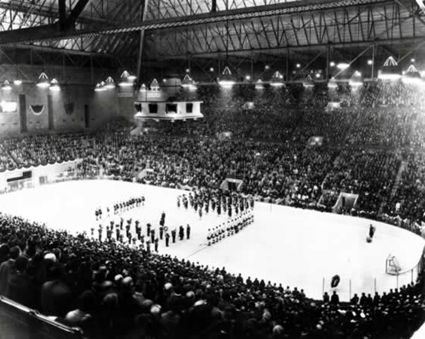
Opening Night - November 12, 1931 - Toronto vs. Chicago

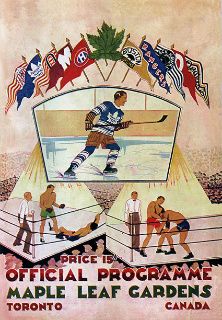
Program cover from the first game at Maple Leaf Gardens

1932 Stanley Cup Champion Toronto Maple Leafs
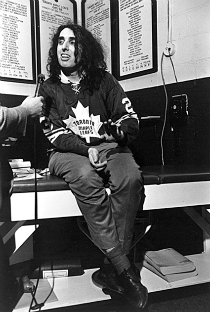
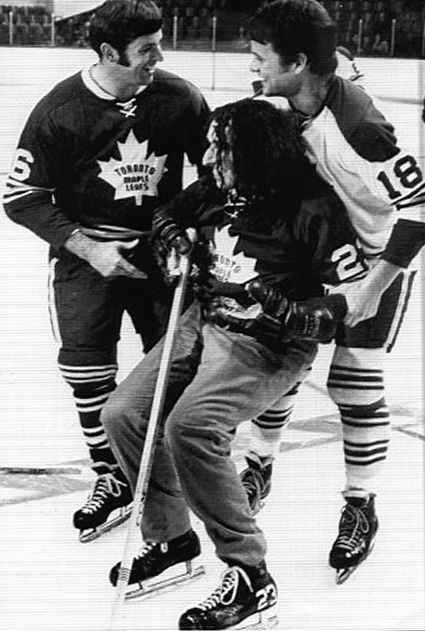
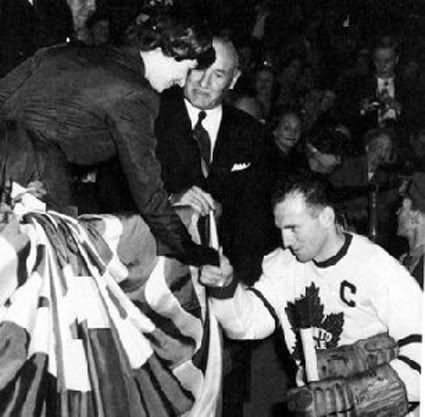
Maple Leafs Captain Teeder Kennedy greets the then Princess Elizabeth
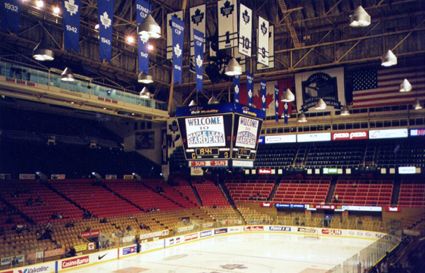
For die hards, here is the first of eight parts of the closing ceremonies of Maple Leafs Gardens,

Tex Rickard, seeing the success of the New York Americans hockey club who played the 1925-26 season in his brand new Madison Square Garden, wanted a team of his own.
Conn Smythe, then the coach of the University of Toronto hockey team, was hired as the Rangers General Manager for a sum of $10,000. He acquired Lorne Chabot, Bill Cook, Frank Boucher, Ching Johnson and 27 other players for a total of just $32,000. Rangers president Colonel John S. Hammond had a falling out with Smythe and fired him just prior to the start of the season, as well as keeping $2500 of Smythe's promised money.
When Rangers owner Rickard offered Smythe a job as vice president after the Rangers opening night victory, Smythe told Rickard not only would he not work with the Rangers management again, but how they cheated him out of his full pay. Rickard paid Smythe the remainder of the money he was due and asked him to stay. It was too late, however, as Smythe returned to Toronto and vowed to win the Stanley Cup in revenge.
Smythe took the money he received from Rickard and bet it on a football game and won. He took his winnings and next bet on a Toronto St. Pats hockey game and was a winner once more. Smythe then organized a group of other investors and bought the St. Patricks for $164,000, preventing a sale to a Philadelphia group who had offered $200,000 by promising to keep the club in Toronto.
When Smythe took control of the team on February 14, 1927 he thought the name "St. Patricks" was too Irish Catholic and immediately renamed the team the Maple Leafs and changing their colors to the blue and white of the University of Toronto.
Smythe worked to build the Maple Leafs into a contender and made the playoffs for the first time in four seasons in 1929.
Then, after four seasons of playing in the Toronto Arena, Smythe had Maple Leaf Gardens constructed in under six months for $1.5 million - just 100 yards from where Smythe was born - in order to accommodate more fans to meet the rising cost of players.

The first game ever at Maple Leafs Gardens was a 2-1 loss to the Chicago Blackhawks in front of 13,542 fans, with the top ticket price being $2.75.

Despite the opening night loss, the Maple Leafs would go on to qualify for the playoffs in 1931, beating the Chicago Blackhawks in the opening round and next eliminating the Montreal Maroons to earn a trip to the finals. Smythe would gain his revenge on the Rangers, as the Maple Leafs would defeat New York three games to none, capturing the Stanley Cup at home in Maple Leaf Gardens, a fine way to cap off the first season at the new arena.

Many other events were held at Maple Leaf Gardens over time, including professional wrestling, boxing, basketball, political rallies and concerts, including Frank Sinatra, Elvis Presley, The Beatles and... Tiny Tim.


Maple Leaf Gardens even hosted a hockey exhibition for the future Queen of England, Elizabeth II in 1951.

In addition to the Maple Leafs of the NHL, many other teams also called the building home. The Toronto Lions of the OHA, the Toronto Marlboros of the OHL and the Toronto Toros of the WHA all played hockey, the Toronto Huskies of the BAA (later the NBA) and the Buffalo Braves and Toronto Raptors of the NBA played some basketball, the Toronto Bilzzard of the NASL and Toronto Shooting Stars (NPSL) called it home for indoor soccer and the Toronto Rock of the NLL played professional lacrosse there. Maple Leaf Gardens was also the first hockey arena to have plexiglass at the ends of the rink.
The Maple Leafs became so popular that the team sold out every single game they played between 1946 and their final game in the arena in 1999 - 54 years of sold out hockey in total. As a result of the demand for Maple Leafs tickets, seats were added again and again throughout its history, increasing from 13,542 on opening night in 1931 to 16,307 by 1968, including taking down a large portrait of Queen Elizabeth II to make room for more seating!

Eventually, the Maple Leafs would move to the brand new Air Canada Centre, complete with the luxury boxes that the old arena lacked, in 1999 after 67 years of playing in Maple Leaf Gardens.
Today's featured jersey is a 1998-99 Toronto Maple Leafs Mats Sundin jersey, which features the classy and attractive Maple Leaf Gardens Memories and Dreams patch to commemorate the final season of Maple Leaf Gardens.
This style jersey was first used for the closing ceremonies of Maple Leaf Gardens as a one time only throwback, but proved so popular and well received that the Maple Leafs brought it back the following season of 2000-01 as an alternate jersey, one of the most attractive and effective third jerseys in the league at the time - and one of the few white third jerseys. It remained in use through the 2006-07 season when the change to Reebok Edge jerseys led to the dropping of all third jerseys for a year. It was then brought back in the Edge template as quickly as possible in 2008-09 and was used this time through the 2010-11 season.
Most teams opted for a dark colored third jersey and promoted a secondary trim color to be the primary for their alternates. Wanting to wear them at home, the visiting team was now required to pack their road dark and home whites to wear when their hosts were wearing their colored alternates so often, it eventually led to the current practice of the home teams wearing dark so the traveling teams in the NHL now only had to travel with their home whites.
This style jersey was first used for the closing ceremonies of Maple Leaf Gardens as a one time only throwback, but proved so popular and well received that the Maple Leafs brought it back the following season of 2000-01 as an alternate jersey, one of the most attractive and effective third jerseys in the league at the time - and one of the few white third jerseys. It remained in use through the 2006-07 season when the change to Reebok Edge jerseys led to the dropping of all third jerseys for a year. It was then brought back in the Edge template as quickly as possible in 2008-09 and was used this time through the 2010-11 season.
Most teams opted for a dark colored third jersey and promoted a secondary trim color to be the primary for their alternates. Wanting to wear them at home, the visiting team was now required to pack their road dark and home whites to wear when their hosts were wearing their colored alternates so often, it eventually led to the current practice of the home teams wearing dark so the traveling teams in the NHL now only had to travel with their home whites.
On a personal note, we had the good fortune to see a game at Maple Leaf Gardens once. While driving into Toronto we heard on the radio that the Maple Leafs were going to be playing their first pre-season game of the year versus the Quebec Nordiques in a couple of days time. Our original plan was to see a Toronto Blue Jays baseball game at SkyDome during it's first year of operation, 1989, and a visit to the Hockey Hall of Fame, which had yet to relocate to downtown Toronto, with no idea that there would also be a hockey game happening during our stay.
Even more to our surprise was discovering that we were staying at the Days Inn on Carlton Street, located about three feet west of Maple Leaf Gardens - which was right next door!
Our lasting memory of the grand old arena? It was THE smokiest non-smoking building we've ever been in. A true throwback to the days of the original six inhabited by throwback men who did things they way they were used to, modern rules be damned.
For die hards, here is the first of eight parts of the closing ceremonies of Maple Leafs Gardens,
Labels:
Maple Leaf Gardens,
Sundin Mats,
Toronto Maple Leafs
Monday, November 11, 2013
1930-31 Philadelphia Quakers Bill Hutton Jersey
On this date back in 1930, NHL hockey made it's debut in the City of Brotherly Love, as the Philadelphia Quakers took to the ice for the first time - a 3-0 loss to the New York Rangers.
The team had relocated from their previous home in Pittsburgh, where they were known as the Pirates. The owners of the Pittsburgh Pirates were $400,000 in debt and, needing a new arena in Pittsburgh, asked permission to temporarily relocate the team to Philadelphia until a new arena could be constructed in Pittsburgh.

The Quakers were nothing short of a disaster. It wasn't until the third game of the season that they managed to score their first goal. They completed their season with a record of 4 wins, 36 losses and 4 ties and their .136 winning percentage was an NHL record low that would stand for 45 years.
As one would assume with a record such as that, the Quakers finished the season the fewest goals scored and gave up the most goals against in the NHL for the year.
Making matters worse for the Quakers, they had competition from the Philadelphia Arrows of the Can-Am Hockey League, who had a three season head start on the Quakers, with whom they shared the Philadelphia Arena.
The one notable player for the Quakers was Syd Howe, who started his career with the Ottawa Senators. He then played for the Philadelphia Quakers before moving on to the Toronto Maple Leafs for one season. Howe next rejoined the Ottawa Senators and then moved with them when they relocated and became the St. Louis Eagles before joining the Detroit Red Wings for 12 seasons. Syd, no relation to Gordie Howe, would retire as the NHL's leading scorer with 237 goals and 291 assists for 528 points when he retired in 1946.

Rather than move back to Pittsburgh for the next season as originally hoped, the owners did not field a team anywhere in 1931-32. Finally after five non-playing seasons during the heart of the depression, the owners officially cancelled their franchise when a new arena was never constructed in either Pittsburgh or Philadelphia.
During the era of the depression, four of the ten NHL clubs would fold, leaving what is now known as "The Original Six". Aside from the Pittsburgh Pirates/Philadelphia Quakers who dropped out of the league in 1931, the Ottawa Senators/St. Louis Eagles ceased operations in 1935, the Montreal Maroons folded in 1938 and New York Americans would fall by the wayside in 1942.
NHL hockey would not return to Philadelphia or Pittsburgh until the Great Expansion of 1967 with the arrival of the Philadelphia Flyers and Pittsburgh Penguins, both of whom would eventually go on to win the Stanley Cup.
Today's featured jersey is a 1930-31 Philadelphia Quakers Bill Hutton jersey from their only season in the NHL. Hutton was a defenseman who joined the Quakers during the season and played in 21 of their 44 games.
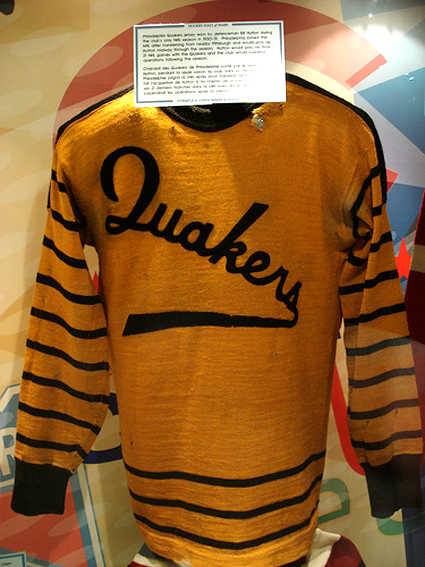
Labels:
Philadelphia Quakers
Subscribe to:
Comments (Atom)

